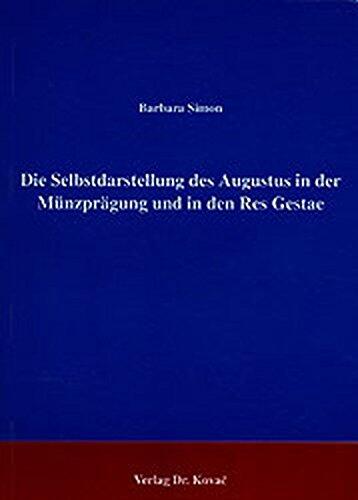
Die Selbstdarstellung des Augustus in der Münzprägung und in den Res Gestae: Barbara Simon
还没有评分
Action & Adventure
格式
平装书
页数
212
语言
德语
已发布
Jan 1, 1993
出版商
Verlag Dr. Kovac
版本
1
ISBN-10
386064047X
ISBN-13
9783860640470
描述
Barbara Simon's exploration of Augustus' self-representation through coinage and the Res Gestae offers a detailed examination of the intertwining of politics and propaganda in ancient Rome. The study delves into how Augustus used numismatic imagery to craft his public persona, asserting his authority and legacy in a rapidly changing political landscape. Simon meticulously analyzes the symbolism embedded in the coins, providing insights into how these artifacts served not just as currency but as tools of political messaging.
Through her comprehensive research, Simon highlights the strategic intentions behind the inscriptions and visual motifs of the coins, revealing a nuanced understanding of Augustus’ ambitions and achievements. The Res Gestae, a monumental inscription detailing his accomplishments, complements the analysis, illustrating how Augustus consciously curated a narrative that would endure beyond his reign.
By integrating historical context with a rigorous examination of primary sources, Simon’s work invites readers to reconsider the effectiveness of Augustus' self-presentation and the lasting impact of his regime on the Roman Empire. This study is an enlightening contribution to the field of ancient studies, particularly for those interested in the intersections of art, politics, and history.
Through her comprehensive research, Simon highlights the strategic intentions behind the inscriptions and visual motifs of the coins, revealing a nuanced understanding of Augustus’ ambitions and achievements. The Res Gestae, a monumental inscription detailing his accomplishments, complements the analysis, illustrating how Augustus consciously curated a narrative that would endure beyond his reign.
By integrating historical context with a rigorous examination of primary sources, Simon’s work invites readers to reconsider the effectiveness of Augustus' self-presentation and the lasting impact of his regime on the Roman Empire. This study is an enlightening contribution to the field of ancient studies, particularly for those interested in the intersections of art, politics, and history.